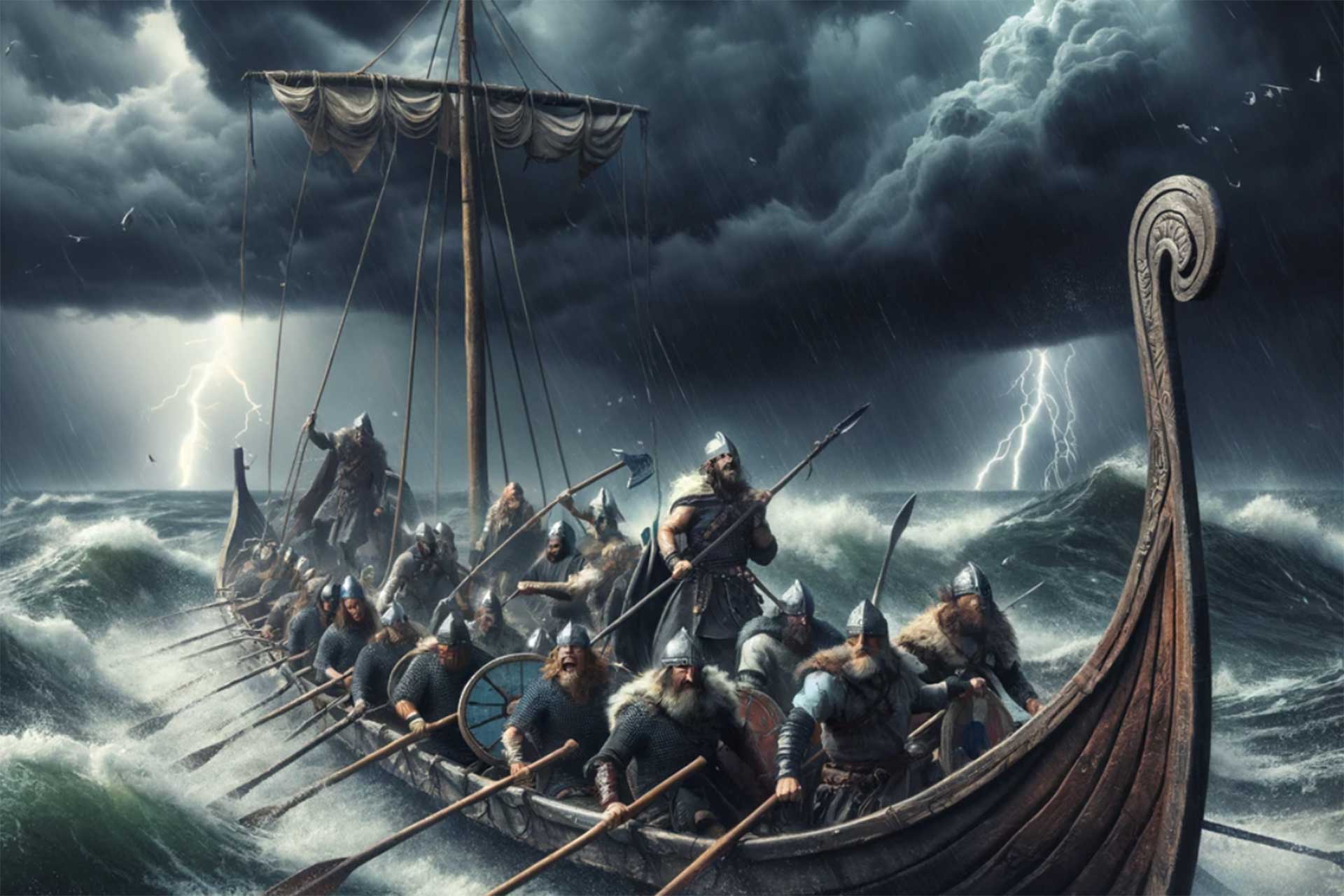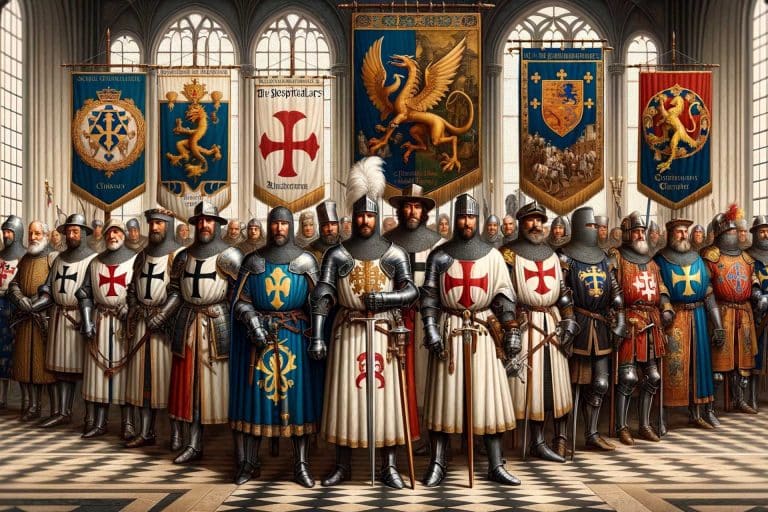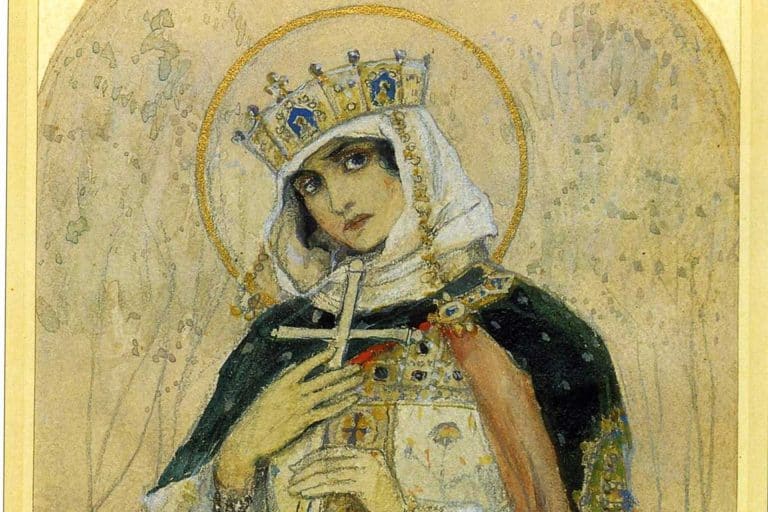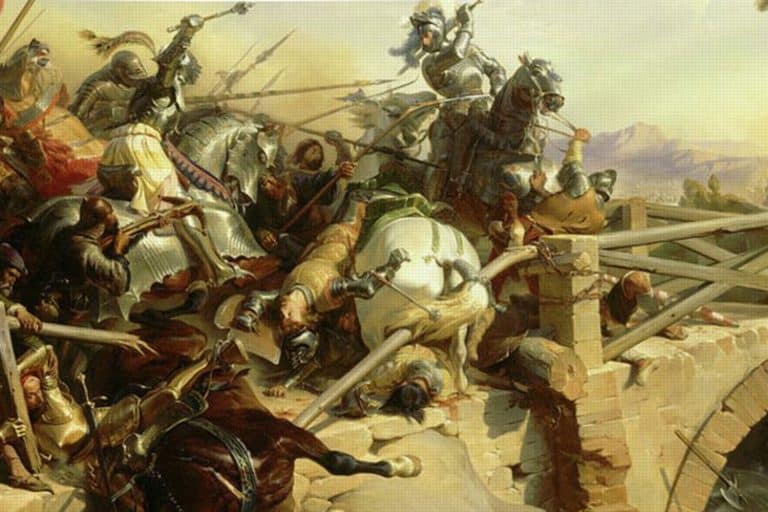Sagas of the Sea: 8 Viking Voyages that Ventured Beyond Known Seas
Navigating Uncharted Waters: The Legacy of Viking Voyages
Viking voyages are the epitome of ancient exploration and daring. These Norse adventurers set sail on travels that pushed the boundaries of the known world. Each voyage carried tales of peril, discovery, and the unyielding enthusiasm of exploration from Greenland’s icy shores to Vinland’s mysterious lands.
These sagas, passed down through generations, not only highlight the Vikings’ exceptional navigational skills but also their profound impact on history. Venturing beyond known seas, they connected distant lands through trade, warfare, and cultural exchange, leaving an indelible mark on the tapestry of human history. We will delve into these Viking voyages in chronological order.
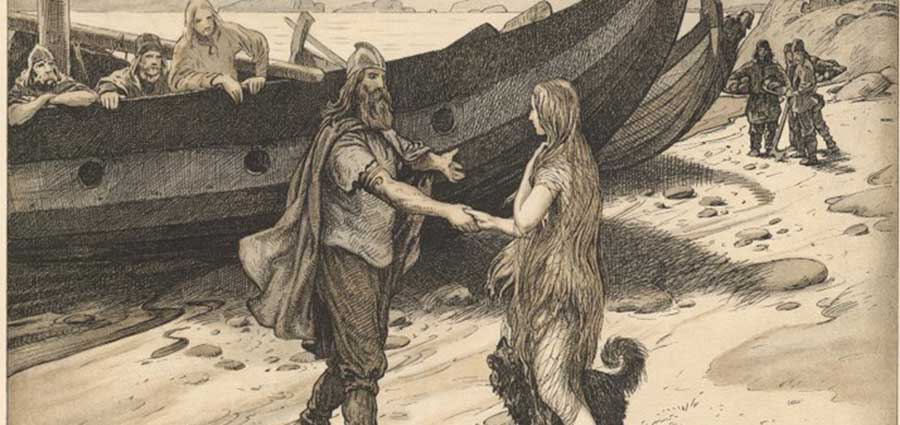
Ragnar Lodbrok’s Bold Siege: The Raids on Paris (845 AD)
Ragnar Lodbrok, a figure shrouded in the mists of legend and history, undertook one of the most audacious Viking raids in 845 AD. Steering his longships up the Seine River, Ragnar demonstrated extraordinary navigational skills, showcasing the Vikings’ sailing prowess and relentless ambition to explore and plunder. This expedition was not just a raid but a declaration of the Vikings’ ability to penetrate the heart of Carolingian Francia, striking fear far beyond the coastal villages.
The impact of Ragnar’s raid on Paris reverberated through the ages, setting a precedent for Viking exploration and incursion into Europe. It underscored the strategic brilliance of Viking leaders in exploiting Europe’s river systems for trade and warfare, leading to further explorations and settlements in unfamiliar territories. Tales of Ragnar’s life inspired generations of Norsemen to embark on their voyages, seeking wealth and glory on the seas.
Ragnar Lodbrok, part historical figure and part myth, is remembered as much for his legendary exploits as for his contributions to Viking exploration. Beyond the raids, his life—depicted in various sagas and chronicles—embodies the quintessential Viking essence of adventure, courage, and resilience. The raid on Paris is a testament to Ragnar’s enduring fame, immortalizing him as a symbol of the Viking Age’s far-reaching impacts on European history.
Ohthere’s Northern Odyssey: A Voyage to the White Sea (Late 9th Century)
Ohthere, a notable Norse explorer from the late 9th century, embarked on a groundbreaking journey from Norway, navigating the treacherous coastline to reach the White Sea in modern-day northwestern Russia. His accounts provided King Alfred the Great with invaluable insights into the then-unknown northern frontiers of Scandinavia, including detailed observations of the Sami people’s way of life. Ohthere’s narratives are among the first recorded European descriptions of the region, marking a significant contribution to medieval geography and ethnography.
This voyage expanded the geographical knowledge of contemporary European monarchs and set a precedent for Viking exploration in the Arctic regions. It underscored the Norsemen’s ability to undertake long and perilous travels, paving the way for further expeditions into the Arctic and Atlantic. Ohthere’s detailed account of the northern seas and lands, filled with descriptions of the natural resources and the peoples he encountered, highlighted the potential for trade and exploration in these remote areas.
Ohthere’s legacy is that of an intrepid explorer whose voyages extended the known world of his time. His trips contributed to the rich tapestry of Viking exploration narratives, showcasing the Norse curiosity and daring that drove them to explore far beyond their homelands. Ohthere’s life, as recorded in the annals of history, exemplifies the spirit of exploration that characterized the Viking Age, leaving an indelible mark on the history of exploration.
Erik the Red: The Green Land Pioneer (982-985 AD)
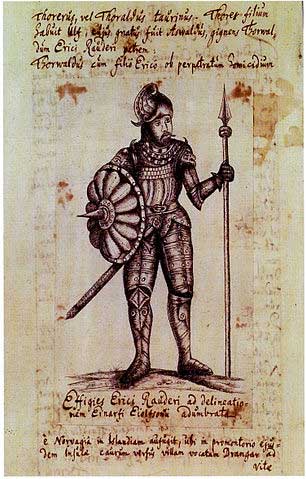
Erik the Red, named for the fiery color of his hair and perhaps his temper, is famed for his exploration and founding of the first lasting Norse settlements on the icy shores of Greenland between 982 and 985 AD. After being exiled from Iceland due to feuds, Erik ventured west, ultimately establishing Brattahlid in present-day Qassiarsuk and fostering the growth of what became known as the Eastern Settlement. This daring move significantly expanded the horizons of the Viking world and demonstrated the potential for Norse colonies in the far reaches of the North Atlantic.
Erik’s successful settlement in Greenland had profound implications for Viking exploration. It showcased the Norse capacity for maritime navigation, survival, and community establishment under harsh conditions, encouraging subsequent generations to explore and settle even farther afield. This love of adventure led the Vikings to reach the shores of North America long before Columbus set sail.
Erik the Red’s ability to see the potential for Norse life in Greenland, despite its challenging environment, laid the groundwork for a significant period of Norse activity in the North Atlantic. His life, marred by conflict yet marked by remarkable achievements, embodies the essence of the Viking Age — an era defined by exploration, expansion, and the indomitable will to forge new paths.
Bjarni Herjólfsson: The Unwitting Pathfinder (circa 986 AD)
Bjarni Herjólfsson’s name entered the annals of exploration not through conquest or settlement but by a twist of fate. In circa 986 AD, while navigating from Iceland to Greenland, a fierce storm sent him off course, leading him to sight the coast of North America — a land unknown to Europeans at the time. Though he never set foot on its shores, Bjarni’s sighting was a beacon that guided future Viking voyages, notably inspiring Leif Erikson’s expedition to Vinland.
Bjarni’s unexpected encounter with the North American coast underscored the Vikings’ remarkable navigational skills and daring to face the unknown seas. This event broadened the geographical horizons of the Norse people and set the stage for the more detailed explorations that would follow, proving that vast and uncharted lands lay beyond the familiar waters of the North Atlantic. His account contributed to the Norse sagas, enriching the Viking heritage of adventure and discovery.
Despite Bjarni’s significant role in the prelude to the Norse exploration of North America, little is known about his life beyond this voyage. His legacy, however, is cemented in the annals of exploration history; as the first European to lay eyes on the North American continent, he paved the way for the bold voyages of those who followed. Bjarni Herjólfsson’s name may not be as renowned as that of Leif Erikson. Still, his accidental discovery forever changed the course of Viking voyages and world history.
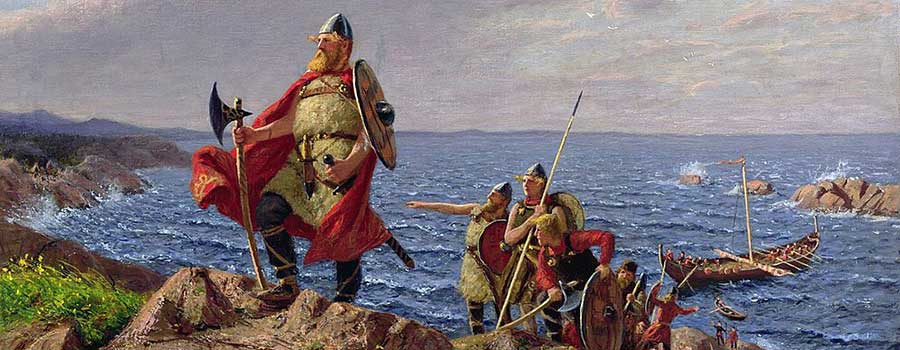
Vinland: Leif Erikson’s New World (Circa 1000 AD)
Leif Erikson, propelled by his father Erik the Red’s pioneering example, embarked on a journey to engrave his name into the bedrock of exploration history. Around 1000 AD, Leif led the first European expedition to a land he dubbed Vinland, located in Newfoundland, Canada. This monumental Viking voyage marked the Northmen as the premier Europeans to reach North American shores and redefined the boundaries of the known world centuries before Columbus’s famed journey.
The impact of Erikson’s voyage on future Viking exploration was profound. It ignited a flame of curiosity and ambition in the Norse people, encouraging subsequent explorations and settlements in the New World. The Norse sagas, filled with tales of bravery and discovery, were partly inspired by Leif’s voyage to Vinland, showcasing the vast potential of the westward seas.
Leif Erikson remains known for his daring and vision. His journey to Vinland is a testament to the Viking spirit of exploration, setting a precedent for European exploration of the Americas. As the son of Erik the Red, who established the first Norse settlements in Greenland, Leif was born into a lineage of explorers. His voyage expanded the geographic knowledge of the Norse people and established a culture of adventure that would inspire countless others to explore and seek new horizons. Leif Erikson’s name remains synonymous with the Viking Age’s far-reaching impact and its enduring legacy of exploration.
The Courageous Attempt: Thorfinn Karlsefni’s Vinland Colony (circa 1010 AD)
Thorfinn Karlsefni’s venture to Vinland around 1010 AD represents a bold chapter in the annals of Viking exploration. Leading a well-prepared expedition, Karlsefni sought to go beyond mere exploration by attempting to establish a permanent settlement in the New World. Despite initial successes in cultivating the land and engaging in trade, the nascent colony faced insurmountable challenges. Conflicts with the indigenous peoples, whom the sagas call Skrælings, coupled with the harsh environmental conditions, ultimately compelled Karlsefni and his followers to abandon their settlement and return to Greenland.
Karlsefni’s endeavor had a dual impact on future Viking exploration. On one hand, it underscored the formidable challenges of establishing a foothold in distant lands, tempering the Norse’s zeal for westward expansion. On the other hand, it contributed invaluable knowledge about the New World, which was woven into the sagas and oral traditions of the Vikings. This blend of ambition and caution informed subsequent Norse voyages, balancing the allure of discovery with the pragmatism brought about by Karlsefni’s experiences.
Thorfinn Karlsefni’s tale is one of daring ambition tempered by the stark realities of pioneer life in an unforgiving landscape. Born into a family of leaders and explorers, Karlsefni was well-versed in the lore of the seas and the prospects of new lands. His attempt to colonize Vinland is a testament to the Viking essence of adventure and their drive to expand their horizons. Karlsefni’s expedition enriched the saga literature despite the eventual failure of his settlement. It provided a narrative foundation for understanding the Viking presence in North America, firmly embedding his name in the annals of the great Norse explorers.
Sweyn Forkbeard’s Conquest: A Viking Crown Over England (1013 AD)

Sweyn Forkbeard’s invasion of England in 1013 AD marks a pinnacle of Viking military and political strategy, showcasing their capability in raiding and ruling. Sweyn, the formidable King of Denmark, orchestrated an invasion that ended with his acceptance as the King of England, illustrating the Vikings’ adaptability and ambition. This expedition underlined the Vikings’ transition from raiders to rulers, establishing a significant era of Danish influence in English history.
Sweyn’s conquest had a profound impact on future Viking exploration and expansion. It paved the way for subsequent Norse adventures into the British Isles, setting a precedent for Viking governance outside Scandinavia. This period of Danish rule influenced England’s cultural and political landscape, integrating Norse practices and enriching the Anglo-Saxon realm.
Sweyn Forkbeard’s name has been glorified by his successful conquest and brief reign over England, which epitomized Viking martial skill and their capacity for governance. Born into the royal lineage of Denmark, Sweyn was a figure of controversy and ambition. His conquest of England culminated in years of raids and battles, driven by a desire to expand his rule and influence. Sweyn’s legacy is a testament to the Vikings’ significant role in shaping medieval European history, extending far beyond their Scandinavian homelands to leave an indelible mark on England and beyond.
Ingvar the Far-Travelled’s Legendary Journey (circa 1041 AD)
Ingvar the Far-Travelled embarked on an extraordinary expedition around 1041 AD, charting a course from Sweden through the winding rivers of Eastern Europe to the vast expanse of the Caspian Sea. His journey, reaching into the heartlands of the Saracens, stands as a testament to Viking audacity and their insatiable thirst for exploration. Ingvar’s voyage was not merely an adventure; it marked a significant chapter in the annals of Viking exploration, showcasing their ability to traverse great distances and engage in cultural and trade exchanges with distant civilizations.
This venture into unknown territories had a profound impact on future Viking exploration. By expanding the known world and illustrating the vast potential for trade and cultural exchange beyond their traditional raiding grounds, Ingvar’s travels encouraged a more sophisticated understanding of navigation and diplomacy among the Vikings, which would shape their future expeditions.
Ingvar the Far-Travelled is immortalized in the sagas, inspiring countless tales of adventure and exploration. His expedition to the Caspian Sea is a poignant reminder of the Viking spirit of exploration, their resilience in the face of the unknown, and their contribution to the medieval trade and cultural exchange tapestry. Ingvar’s life, shrouded in the mists of legend, exemplifies the daring and curiosity that propelled the Vikings onto the pages of history, forever marking them as unparalleled explorers of the medieval world.
Voyages That Shaped the World
The Viking voyages, from the shores of Greenland to the banks of the Caspian Sea, encapsulate a remarkable era of exploration that fundamentally altered the course of history. These sagas of the sea not only expanded the geographical boundaries of the known world but also laid the groundwork for the cultural and economic exchanges that would follow. Through their bravery and navigational prowess, the Vikings demonstrated the boundless potential of human curiosity and the desire to explore the unknown.
These tales of adventure and discovery continue to inspire and captivate, serving as a testament to the Viking voyages of exploration. As we reflect on these historic voyages, we are reminded of the lasting impact of such journeys on our understanding of the world and the interconnectedness of diverse cultures. The legacy of these Viking voyages, with their ships that ventured beyond known seas, endures as a beacon of exploration and daring that continues to illuminate the human story.

